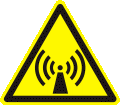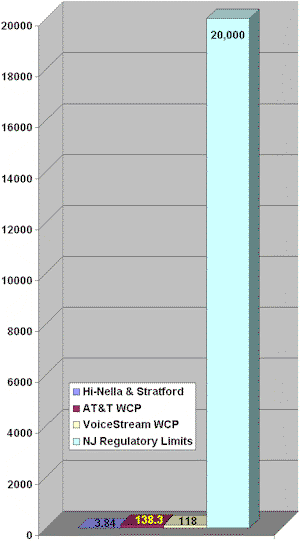

There is an increased public awareness about radiofrequency EMF exposures associated
with cellular towers. Mobile (cellular) phones are a relatively new and rapidly growing
technology that can cause such exposures. Several research groups are investigating the
potential effects of magnetic fields associated with cell phones and cellular towers.
Various research and government organizations have reviewed the available scientific
evidence and concluded that while currently there are no known health risks from being
around these towers, further research is needed.
Cellular radio systems use frequencies between 800 and 900 Megahertz (MHz), while PCS
transmitters use frequencies in the range of 1850 – 1990 MHz. The combination of
antennas and associated electronic equipment is referred to as a base station or cell
site. The antennas having the appearance of rectangular panels are called sector antennas.
Typically these types of antennas are arranged in groups of three, with one antenna in the
group being used to transmit signals and the other two antennas receiving signals. At a
cell site, the total RF power that could be emitted from each transmitting antenna depends
on the number of radio channels (transmitters) that have been authorized and the power of
each transmitter. Not all transmitters are expected to operate simultaneously, thus
reducing typical overall emission levels.
The signal from a PCS base station antenna is essentially directed toward the horizon in a
relatively narrow pattern in the vertical direction. The radiation pattern for a sector
antenna is fan-shaped, like a wedge cut from a pie. As with all forms of electromagnetic
energy, the power density from a PCS transmitter decreases rapidly as one moves further
away from the antenna. As a result, normal ground-level exposure is much less than
exposures that might be encountered if one were very close to the antenna and in its main
transmitter beam. Historically, measurements made near typical cellular or PCS base
station antennas have shown that ground-level power densities are well below regulatory
limits.
The following chart is from a study done in NJ at the request of Congressman Robert Andrews' office. The study surveyed the area surrounding a water tower hosting personal communications services (PCS) antennas from AT&T and VoiceStream (formerly Omnipoint). Community members had raised concerns due to the fact that a school was located on property immediately adjacent to the water tower. The chart clearly indicates that these antenna were well below the regulatory limits.

 The exposure limits used by
the FCC are expressed in terms of SAR (Specific Absorption Rate) , electric and magnetic
field strength and power density for transmitters operating at frequencies from 300 kHz to
100 GHz. The actual values can be found in either of two informational bulletins available
at the FCC web site (OET Bulletin 56 or OET Bulletin 65), http://www.fcc.gov/oet/rfsafety/
The exposure limits used by
the FCC are expressed in terms of SAR (Specific Absorption Rate) , electric and magnetic
field strength and power density for transmitters operating at frequencies from 300 kHz to
100 GHz. The actual values can be found in either of two informational bulletins available
at the FCC web site (OET Bulletin 56 or OET Bulletin 65), http://www.fcc.gov/oet/rfsafety/